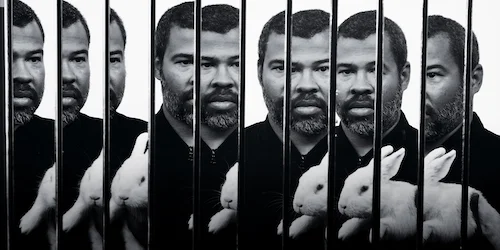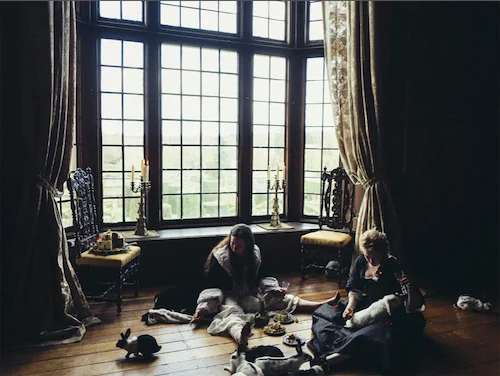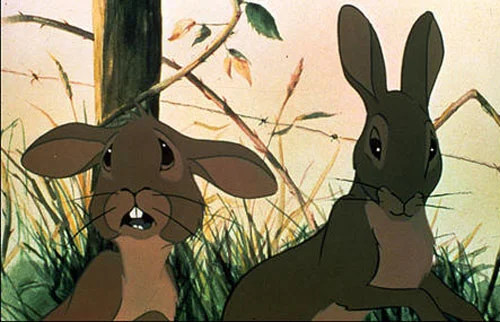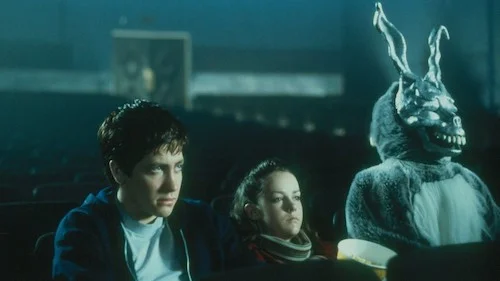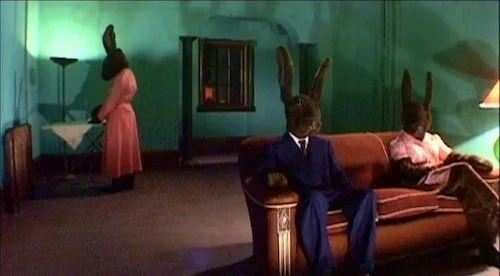From Watership Down to Us: The Use of Rabbits in Cinema
Easter is still more than a month away, but we’re not trying to respond to that holiday season in time. We’re trying to hop onto this recent fascination before the trend disappears.Yes, we’re looking into the current trend of including rabbits in cinema, and also diving into the function these critters have served. You go onto Instagram, and you can find there is a whole community of people obsessed with bunnies. Your humble critic happens to be one of those people, despite not having one of my own (yet).
What is it about rabbits that makes them the ideal metaphor in visual storytelling (and other mediums, of course)? Well, the first obvious indicator is that humans and rabbits are very similar in their fight-or-flight reactions. Rabbits are always on the ready to spring into action, and they are used as such a symbol in many instances. In the extremely-recent film Us, rabbits are seen from the very start: a wall of the caged rodents is slowly zoomed-out on, exposing the overwhelming amount of them in a single room. Without going too deeply into the film for obvious reasons, rabbits are a main theme (down to bunny images appearing on t-shirts) that represents a large population, a squashed collective, and the urge to panic at the drop of a hat.
A scene featuring Queen Anne’s rabbits from The Favourite.
Rabbits are used for a completely different representation, too. With fear, comes the necessity to quiet an anxiety down. Rabbits require nurturing, just like humans do. Queen Anne in The Favourite utilizes rabbits to represent those she has lost in her life, but at the end of the day, it is Queen Anne that needs just as much comforting as her prized pets do. She does not own a duck like some of the other aristocrats (including Horatio, the fastest duck in the city). She is different. Her rabbits represent her freedom when they are let out of their cages. The very last image of the film is a tapestry of Queen Anne’s mental hell, with every ounce of anxiety, depression, and helplessness run amok within a confined space. Queen Anne has never been free, despite being the most powerful figure around. Even if she was ever close, she was barely any different from how she always is.
A scene from Watership Down.
Rabbits are also familiar to us, because they are frequently domesticated pets, or they are commonly seen in our backyards or nearby parks. While squirrels may be more common to spot, they usually are not found being taken care of in peoples homes. The same can be said about house pets that are found in the wild; a corgi in the wild is usually identified as a lost dog, or perhaps a wild stray. Rabbits are one of the best examples of animals that blur this line between wild and domesticated. We know people that own rabbits. You may even own one yourself. If not, you’ve sure seen bunnies darting across a yard, park or road. They’re welcome to the traits we give them (as owners of our own rabbits), or the freedom of their own identities (the ones we see in the wild).
Watership Down is a courageous exploration of both the worth of having a home, and the losses of not having a place to go (domestic vs. wild). This grim tale, based on the Richard Adams novel of the same name, was seen as a major steppingstone between adolescence and adulthood for the many students that watched it (or read it) in high school; it’s likely due to the animal being a bit of an easier transition into the difficult themes the story makes you face. We also have bizarre instances: Harvey featured James Stewart interacting with an invisible, imaginary rabbit, and Donnie Darko had the titular character face a demonic rabbit. There’s even David Lynch’s surreal Rabbits web series that vowed to break all of the rules of a standard sitcom (ranging from ill-timed laugh tracks, to disturbing monologues). Why are rabbits used in these cases?
Frank the Rabbit in an early scene in Donnie Darko.
Perhaps these bunnies are used in their own specific ways. In Donnie Darko, there’s the theme of alternative dimensions and the ability to shift realities. Like a rabbit being passed from wild-to-home, maybe Donnie himself was unfamiliar with his own surroundings. Frank — the creepy rabbit being Donnie interacts with — continuously sends Donnie messages; we also find a stronger connection for Frank’s existence later on the film, but his main purpose is to make Donnie question his own existence.
As for Harvey, maybe the friendly nature of a rabbit just made sense. Anthropomorphic rabbits surround us as children everywhere. The Easter bunny was a child-friendly understanding of the holiday that is actually centred around death and rebirth in the Christian religion (with the bunny being used as a fertility symbol to match the notion of eggs and life). We had Bugs Bunny in the old Looney Tunes cartoons teaching us how to be mischievous. A walking-talking rabbit isn’t foreign to us as children, but having the invisible one in Harvey solidifies the youthful nostalgia in that image that some of us cannot shake off.
A production still of Rabbits.
Then we get to Rabbits: a more recent example that could last be seen in part in David Lynch’s Inland Empire (which featured segments of the web series). The tall ears mimic the television antennae on the set the bunny family fixate on (the shadows in the background showcase a better representation of this). Again, rabbits are a resemblance of home and the unknown, and Lynch is obsessed with linking our lives to our dreams (a familiar territory shrouded by something alien to us). At the end of the day, directors like Jordan Peele and David Lynch might just love rabbits just like the rest of us. Their clever uses of these animals in their works definitely get the mind going, though.
Hopefully this won’t be the end of seeing these loveable, fluffy critters in our films. There are many other examples that can be thought of. At the end of the day, a symbol is a symbol, and a united fascination with an animal also stands well on its own (whether it be dogs, cats, or bunnies). All I know is that these animals are perfect for creating many different ideas: fear, isolation, joy, fertility, the unknown, and the familiar.
Andreas Babiolakis has a Masters degree in Film and Photography Preservation and Collections management from Ryerson University, as well as a Bachelors degree in Cinema Studies from York University. His favourite times of year are the Criterion Collection flash sales and the annual Toronto International Film Festival.

